Review Date: October 8, 2012
Category: Serious to Advanced
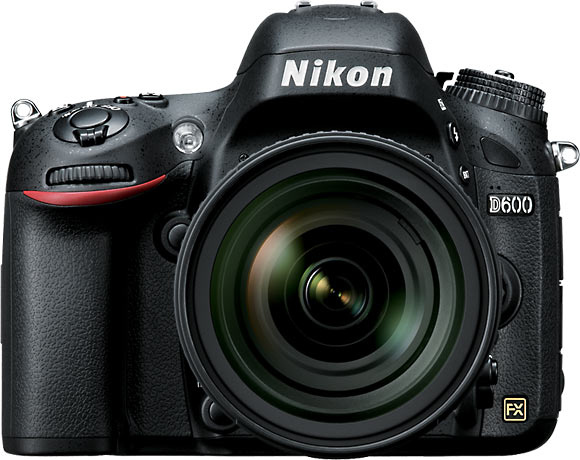

Photoxels Gold Award – DSLR
HANDLING & FEEL
Full-frame at an affordable price. The D600 is Nikon’s smallest, lightest and most affordable full-frame HD-SLR. In this relatively compact and light (for a full-frame DSLR) body, it packs powerful, professional features and, with an optional accessory, even provides wireless sharing and capture capabilities using your smartphone.
The excitement around the D600 is, of course, that a full-frame FX-format DSLR is now available at a reasonably affordable price and it is housed in a body that is about the same size and lighter than that of the DX-format D300s (or just slightly bigger than the DX-format D7000). Enthusiasts who have been using Nikon DX-format DSLRs should now find it quite advantageous to make the transition to full-frame photography.
Of course, the advantages of a full-frame sensor is higher megapixel resolution without the negative hit on image quality usually experienced on smaller sensors. It means that you can safely shoot at high ISOs and still obtain low noise and high detail preserved. It also means that shallow depth of field for beautiful out of focus backgrounds is now readily possible without resorting to post processing digital manipulation.
In my hands-on tests with the Nikon D600, I find that it handles superbly with its deep handgrip and the many external control buttons and dials puts its powerful features at your fingertips. If you come from the Nikon DSLR world, the D600 control layout will seem familiar and inviting (though the button arrangements are not quite the same). Nikon’s claim that the D600 is “a compact, lightweight HD-SLR” is not just marketing adspeak. The D600 weighs 760g, body only. [Add the AF-S NIKKOR 24–85mm f/3.5-4.5G ED VR kit lens (465g), and the camera plus lens adds up 1.225 kg (2.7 lbs).] Compared to the other full-frame Nikon DSLRs (body only), the D600 indeed comes in as lightweight (D800: 900g, d3x: 1.22 kg, d4: 1.18 kg). Now compare the D600 with the smaller sensor, DX-format D300s: 840g. So, in a body that is about the same size and lighter than the DX-format D300s, Nikon has put a full-frame sensor in the D600. It’s quite a feat and one that we welcome.
As expected, the Nikon D600 is a full featured DSLR: it features 24.3MP, Continuous Shooting 5.5fps, ISO 100-6400, 39 point AF system, Full HD 1080p video at 30/25/24p with stereo sound, built-in HDR, PASM modes, and the ability to customize it to pretty much the way you like to shoot.
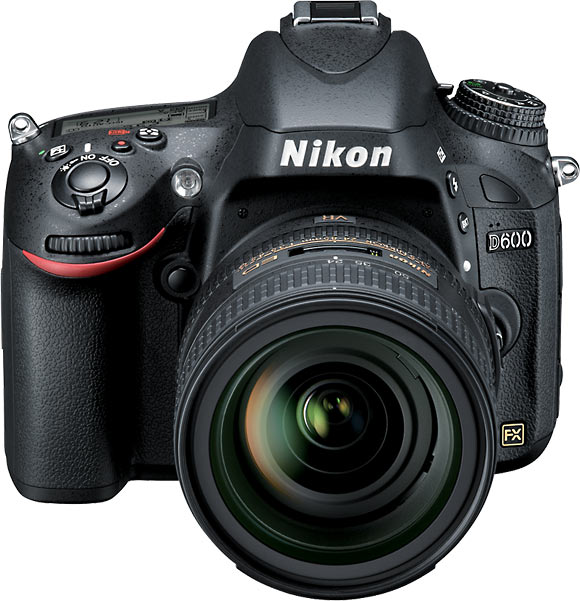
The Nikon D600 comes standard with the AF-S NIKKOR 24–85mm f/3.5-4.5G ED VR kit lens. The starting focal length is a wide-angle 24mm and the 85mm medium tele is great for portrait photography.
There are buttons, dials, command dials to control every setting without having to delve into the menu. The menu itself is comprehensive and, if you are not used to a DSLR menu, easy to get lost in.
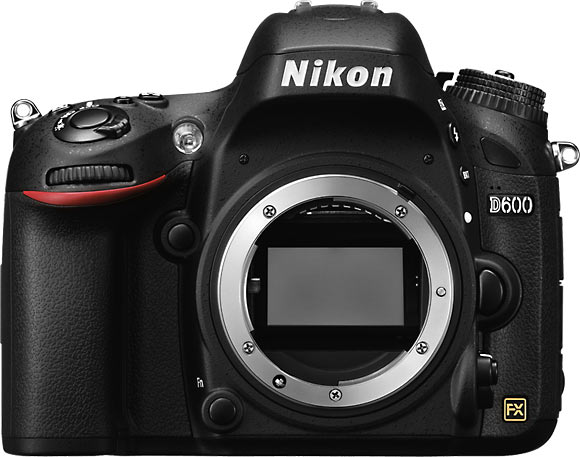
The D600 has a F bayonet mount, therefore accepting all the F-mount Nikkor lenses ever built. Many of those will have to be used in manual exposure and focus modes. However, about 70 NIKKOR AF and AF-S lenses are fully compatible. If you have DX lenses, they can also be used on the D600 for both stills and movies though the image will, of course, be cropped. Don’t expect FX image quality and not all your DX lenses may be fully compatible. However, we are guessing you are upgrading to the D600 because you want to shoot full-frame, so would want to set up a plan to phase out your DX lenses and phase in compatible FX lenses.
The D600 is sealed with gaskets for resistance against dirt and moisture. It has a magnesium alloy top and rear construction. The handgrip is deep and provides a secure and comfortable handling. The D600 does tend to get heavy as the day progresses and, if you are going to be using it in an all day photo shoot, the shoulder strap is recommended.
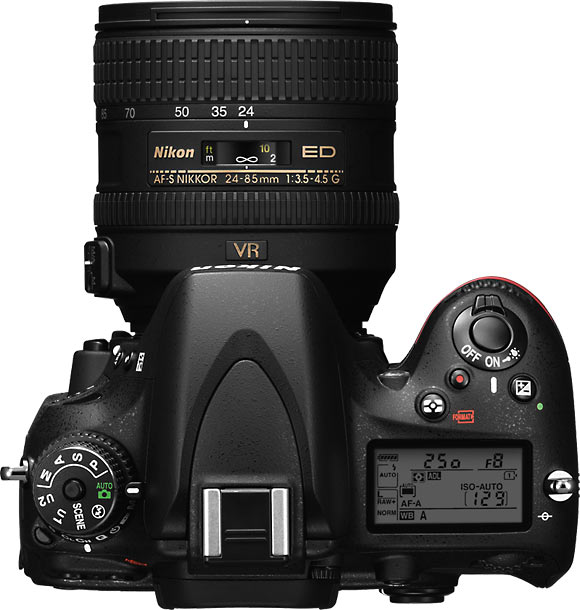
The [Shooting] Mode dial is on top of the Release mode dial on the left side of the viewfinder [viewed from the rear]. The Mode dial allows you to select a shooting mode: AUTO, AUTO No Flash, PASM, Scene modes, and 2 User customizable modes. The Release mode dial is what you use to set the Drive options: Single frame, Continuous Low speed, Continuous high speed, Quiet shutter-release, Self-timer, Remote control, Mirror up. Each dial has a lock release to prevent accidental mode change.
The Power Switch is around the Shutter release button. If you come from the point-and-shoot world, you may confuse it with the Zoom lever. The extra setting is to backlight the Control Panel.
The Control Panel conveniently displays exposure settings and shooting modes. There is also an Information Display (aka Super Control Panel) that displays on the LCD when you press the INFO button.
Startup is super fast and the camera is ready to shoot as soon as you switch it on. Shot to shot times is about 0.5 sec. (20 shots in 10 sec. in M mode, 1/125sec.) in JPEG. You can take one shot after another, as fast as your finger can click the shutter. Using RAW, it’s also that fast but the buffer seems to fill up after the 15th shot (in 8 sec.), when it starts to slow down as the buffer clears more space.
At Image Quality = Large Fine, a 24.3MP JPEG image is compressed down to anywhere between 3.7MB and 14.7MB. A NEF (RAW) image occupies about 24-26MB.
In good lighting, there is no practical shutter lag and both phase-detect and contrast-detect AF are lightning-fast. In low lighting, phase-detection AF is also fast contrast-detect AF may require up to 1 sec. to lock focus, depending on the contrast of the subject. In extreme low-light, both phase-detection and contrast-detect AF struggle, even with the help of the AF-assist illuminator. Using the viewfinder (and hence phase-detection AF), the relevant focus point blinks red and a Focus Indicator lights up to indicate successful focus lock. Using contrast-detect AF, the AF frame stays red and blinks if focus is not achieved, turning a stable green when there is successful focus lock.
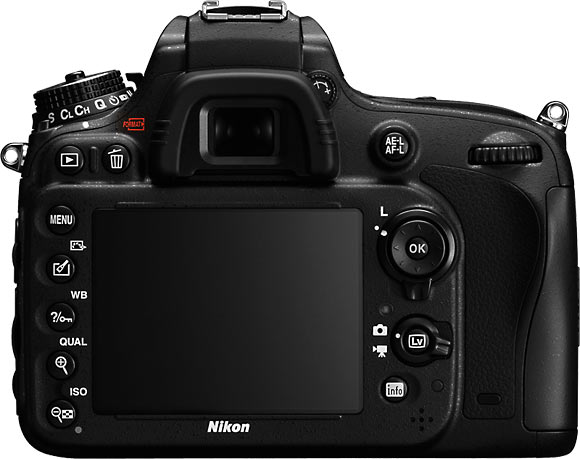
On the back of the camera, there is a 3.2-in. LCD (921k-dot) that is clear and bright. You can display a Grid and, for those who, like me, are horizontally challenged, you can also display an electronic Level Gauge. You can display a Histogram on Playback but not during Record.
You can zoom and either set continuous focus on or manually focus during movie recording. While shooting a movie, you can press the shutter release button to take a still picture, but the movie will then be interrupted.
On the bottom, the tripod mount is metal, inline with the center of the lens. You may be able to change battery while the camera is on a tripod, depending on your tripod.
Included in the box is a rechargeable Li-ion battery EN-EL15 that can take about 900 shots (CIPA standard) on a fresh charge. Expect lower numbers if you use Live View a lot. A Battery Charger MH-25 recharges a depleted battery in about 2 hours 35 minutes; you can either plug it directly into a wall outlet (an accessory is provided to enable that) or use a power cord.
The Nikon D600 accepts the SD, SDHC and SDXC memory cards. There are two memory card slots available.
Overall, the build quality is excellent, especially when you throw in weather-proofing. The Nikon D600 handles well and, once you take the time to customize it to your liking, and take some time to get used to it, you’ll find it operates with minimum or no frustration.
Next: Nikon D600 User’s Experience


















